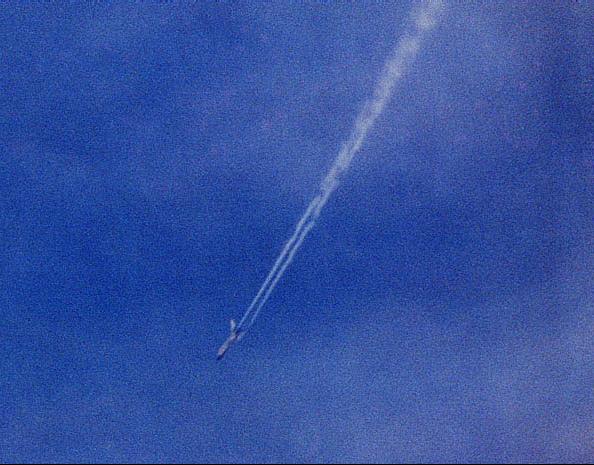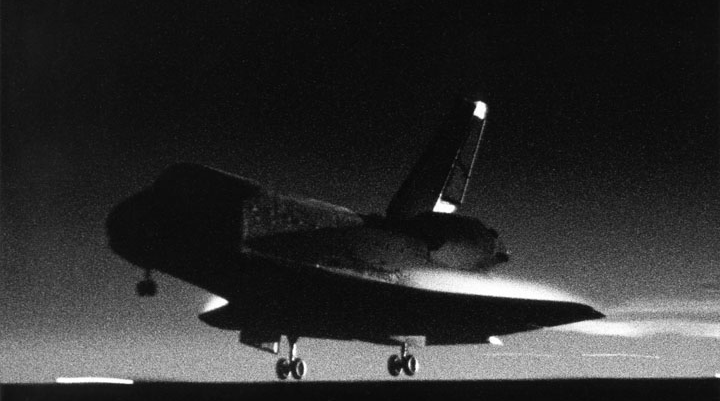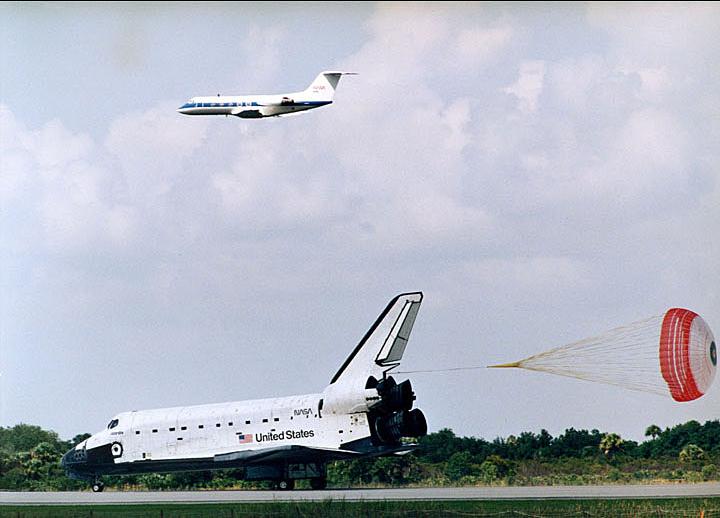 |
||||||||||||||
The Space Shuttle was the first space vehicle since the X-15 which was able to land in a controlled fashion on a runway. Mercury, Gemini, and Apollo all had to return to Earth using a system of parachutes and a large Naval recovery force. To this day, the Russian and Chinese space programs have only used parachutes to bring back their cosmonauts. The wings of the shuttle allowed this ability to land on a runway, but this also meant a tradeoff in the payload that could be taken to orbit due to the extra weight of the wings and supporting structure. Nevertheless, criticisms aside, being able to watch a vehicle that has just completed a mission into Earth orbit swing by overhead and touch down right in front of you was a great way to spend a day. There were six orbiters that were built for the Space Shuttle program: Enterprise, Columbia, Challenger, Discovery, Atlantis, and Endeavour. I have had the honor to be present at the first landings for each of these orbiters and record them photographically. Since Mach 25 Media is based in Southern California, access to Edwards AFB in the Mojave desert was much simpler than trips to Florida for launches. Remember that all photographs are available for collectors to purchase, so if you see a specific shot or two that interests you, please contact me for details. |
 |
|||||
 |
||||||
Fifty-thousand feet above Edwards AFB, the Space Shuttle turns about an invisible cylinder in the sky called the Heading Alignment Circle to line up for landing on the concrete runway. Even though it has just slowed through the speed of sound, giving off a characteristic double sonic boom, and it is still 10,000 feet higher than a commercial airliner flies, the shuttle will be on the ground with wheels stopped in less than five minutes. |
||
 |
||
14 Apr. 1981, at approximately 10:19 in the morning. The Space Shuttle Columbia is about a minute away from making the first runway landing of a spacecraft returning from orbit at the end of mission STS-1. |
||
 |
||
Second mission of Columbia, STS-2, landed at 13:23 PST on 14 Nov. 1981. |
||
 |
 |
|||
 |
||
 |
||||
First touchdown of the newest Space Shuttle, Endeavour. Landing of STS-49 took place at 13:57 PDT on 16 May 1992. |
||||
 |
||||
First night landing of the Space Shuttle. This is Challenger returning from mission STS-8 to Edwards AFB at 40 minutes past midnight on 5 Sep. 1983. |
||||
 |
||||
Discovery completes the first shuttle flight since the loss of the Challenger on 28 Jan. 1986. The landing of STS-26 took place on 3 Oct. 1988, at 09:37 PDT. In the distance, the 747 Shuttle Carrier Aircraft (SCA) can be seen. |
||||
 |
||||
With the Sun just above the horizon, Discovery touches down with former X-15 pilot, Space Shuttle Commander Joe Engle, at the controls at the end of STS-51I. The seven day mission came to an end at 06:15 PDT on 3 Sep. 1985. |
||||
 |
||
Columbia comes in for touchdown at Edwards AFB at the end of mission STS-58 at 07:05 PST on 1 Nov. 1993. Commander John Blaha and Pilot Rick Searfoss are at the controls. |
||
 |
||||
The weather at the Kennedy Space Center is always problematic. Rain showers could come and go in just minutes. The launch of STS-34, for example, was delayed a day because a thundershower formed right on top of the runway just a few miles from the launch pad. Aboard the shuttle, the commander was dismayed by the delay since outside of his cockpit window there was not a cloud in the sky to be seen. |
||||
 |
||||
It took three attempts to catch landing photos in Florida. Both STS-7 and STS-34 were sent to Edwards AFB because of problems at KSC. On 7 Jul. 1995, the streak came to an end with the beautiful Florida landing of STS-71 at 10:54 EDT. After years of nothing but brown in the landing shots, it was great to see some green. |
||||